Past Events
Interested in Cotsen events? Sign up for our mailing list.A conversation between Bárbaro Martínez-Ruiz and José Bedia,
Moderated by Manuel Jordán
May 18th, 10am - 11am PST
This program follows an exciting interdisciplinary seminar on African Objects in Museums, where students examined a series of objects including painted Yoruba drums and Kongo minkisi. To continue discussions, the Fowler Museum, the Cotsen Institute of Archaeology, the UCLA/Getty Conservation Program, UCLA Information Studies, and the UCLA Africa Studies Center are hosting a program where we will engage three specialists who are artists, scholars, and/or practitioners. The two speakers are members of the Afro-Cuban and Cuban diaspora, respectively.
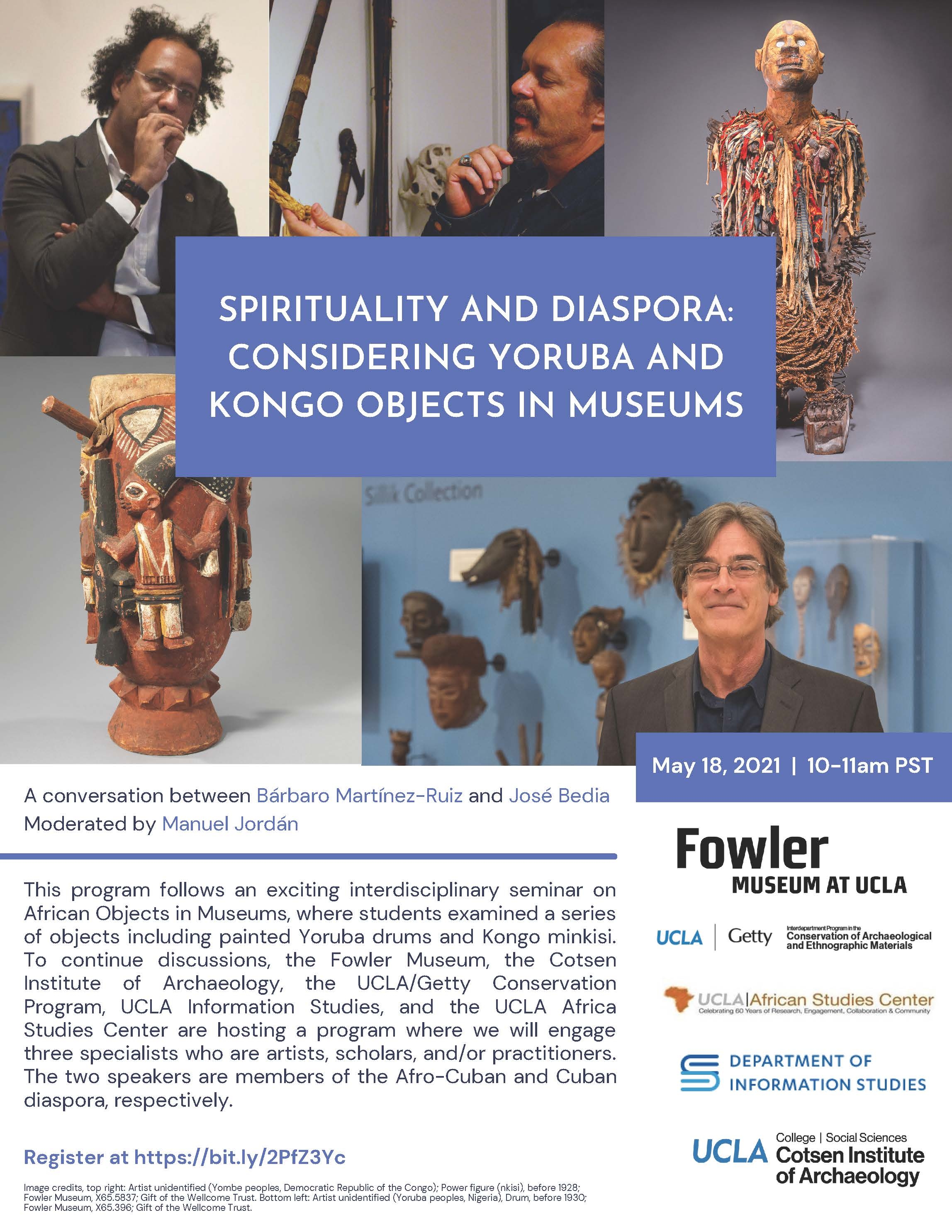
Contact Ellen Pearlstein
Email epearl@ucla.edu
Phone
Nathan Acebo, MA, PhD
University of California, Chancellor's Postdoctoral Scholar and Critical Mission Studies Postdoctoral Scholar
Anthropology & Heritage Studies
University of California, Merced
The study of the written history of Indigenous communities continues to evolve following new contributions from collaboration-based research partnerships committed to practicing Indigenous Archaeology. As a form of archaeology practiced with, by, and for Indigenous peoples, Indigenous Archaeology is reshaping our understanding of North American colonization by providing new perspectives on the vibrancy of Indigenous cultures and enduring political traditions. This talk showcases how Indigenous Archaeology was practiced in partnership with Tongva, Acjachemen and Payómkawichum communities in southern California to illuminate forms of political and economic autonomy beyond the reach of Spanish and Californio colonial authorities in the southern Los Angeles Basin hinterlands (1770-1848 CE). I present how the Black Star Canyon Archaeology Project’s (BSCAP: 2013-2021) analyses of orphan collections were specifically guided by Indigenous collaborators’ concept of “thrivance”—a condition of existence focused on political and economic dimensions of Indigenous autonomy—to yield said history and use archaeology as a tool for Indigenous storytelling on said peoples’ terms.
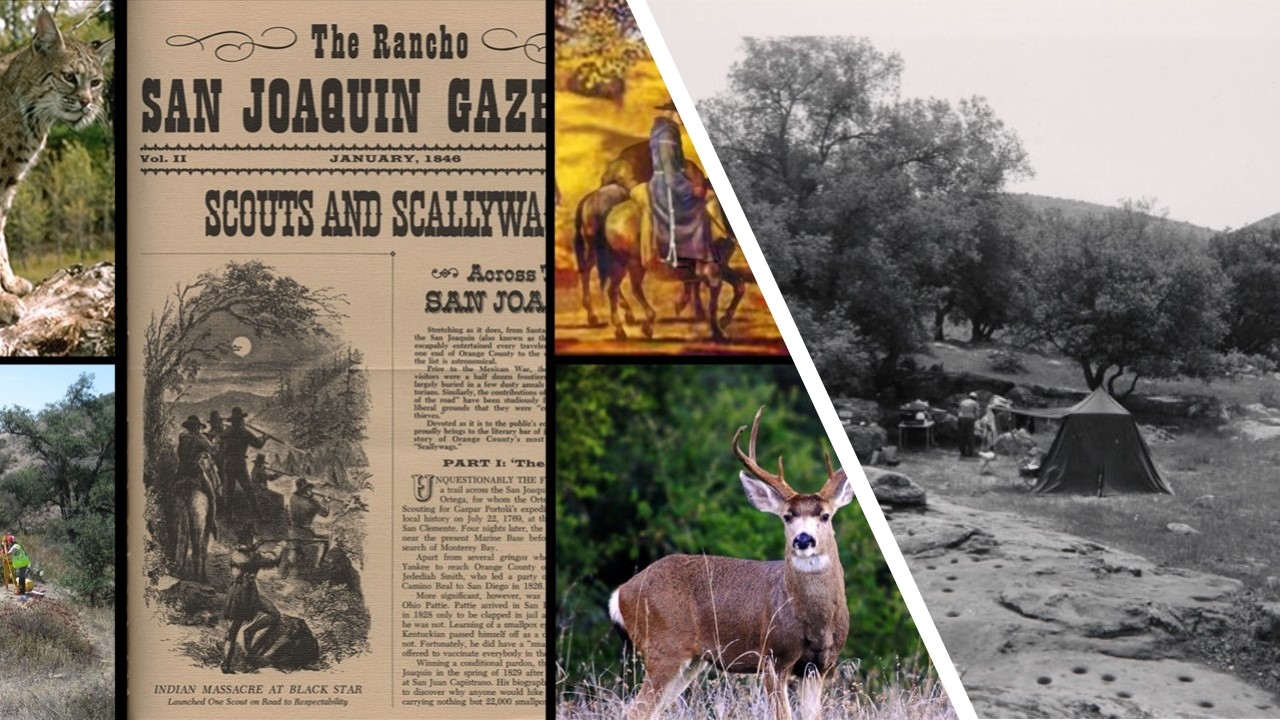
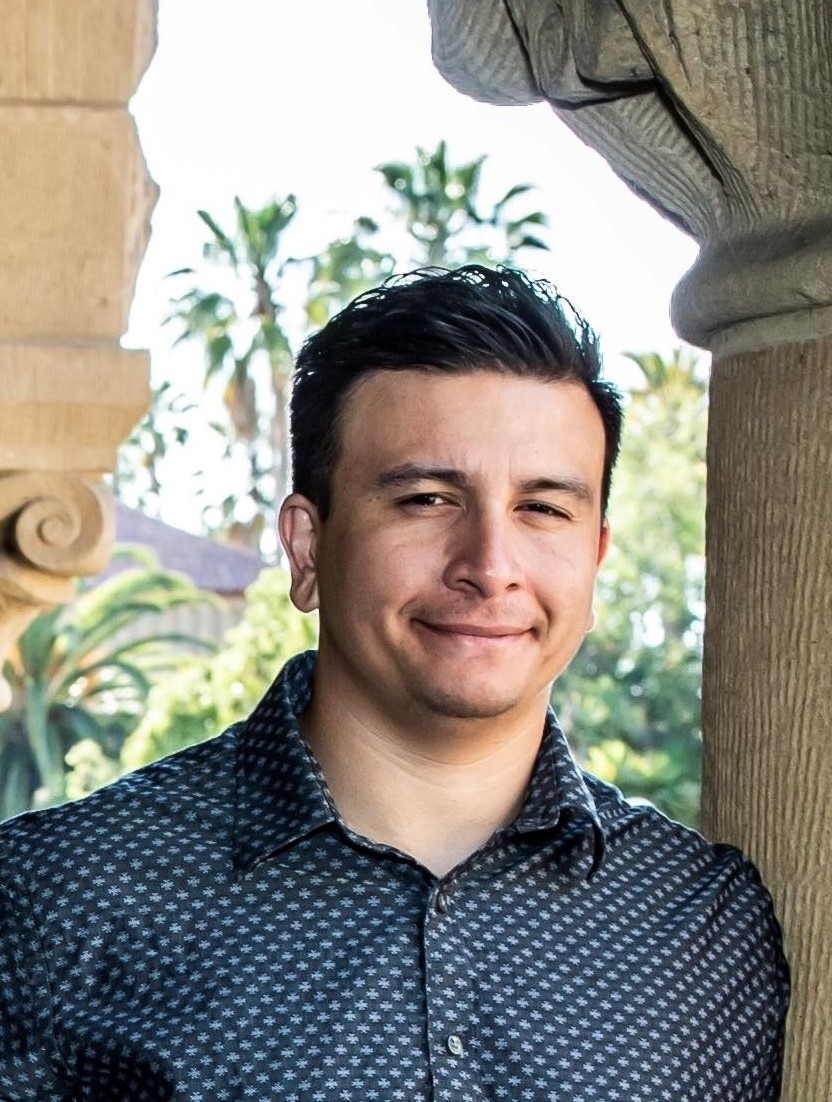 Dr. Nathan Acebo is the University of California Chancellor’s Postdoctoral Fellow in Critical Mission Studies for the 2020–2021 year at the University California, Merced and holds the position of Assistant Professor of Anthropology-Native American and Indigenous Studies at University of Connecticut beginning in August 2021. Dr. Acebo received his Ph.D. at Stanford University and was a fellow in the Enhancing Diversity in Graduate Education Doctoral Program (EDGE: 2013-2020), Institute for Research in the Social Sciences (IRiSS: 2019-2020), and Mellon Humanities Program (2019-2020). His research in southern California and Hawaii focuses on Indigenous networks, subaltern resistance, and decolonizing practices.
Dr. Nathan Acebo is the University of California Chancellor’s Postdoctoral Fellow in Critical Mission Studies for the 2020–2021 year at the University California, Merced and holds the position of Assistant Professor of Anthropology-Native American and Indigenous Studies at University of Connecticut beginning in August 2021. Dr. Acebo received his Ph.D. at Stanford University and was a fellow in the Enhancing Diversity in Graduate Education Doctoral Program (EDGE: 2013-2020), Institute for Research in the Social Sciences (IRiSS: 2019-2020), and Mellon Humanities Program (2019-2020). His research in southern California and Hawaii focuses on Indigenous networks, subaltern resistance, and decolonizing practices.
Contact Michelle Jacobson
Email mjacobson@ioa.ucla.edu
Phone
Glenn Wharton, Andrea Geyer
Friday April 23rd, 11:00am - 12:00pm (PT)
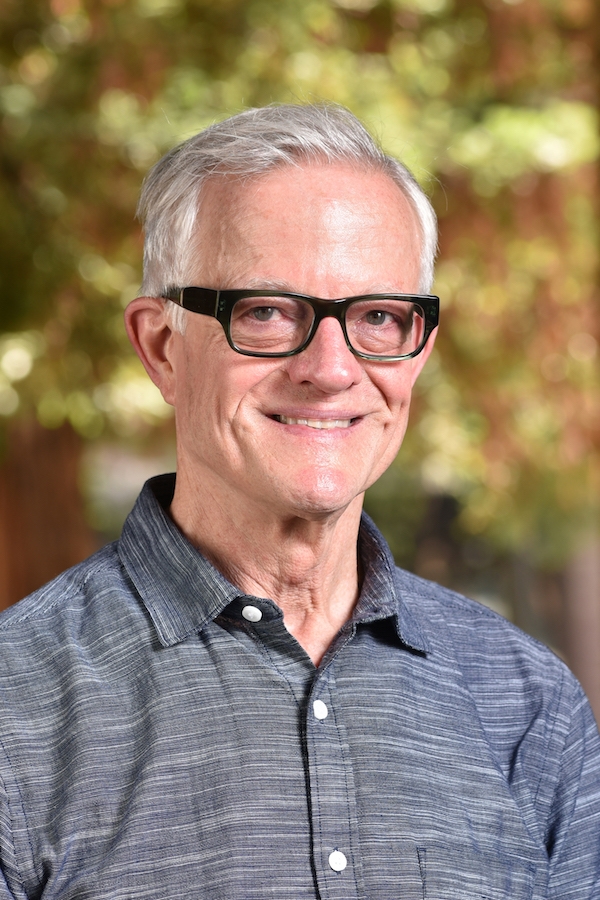
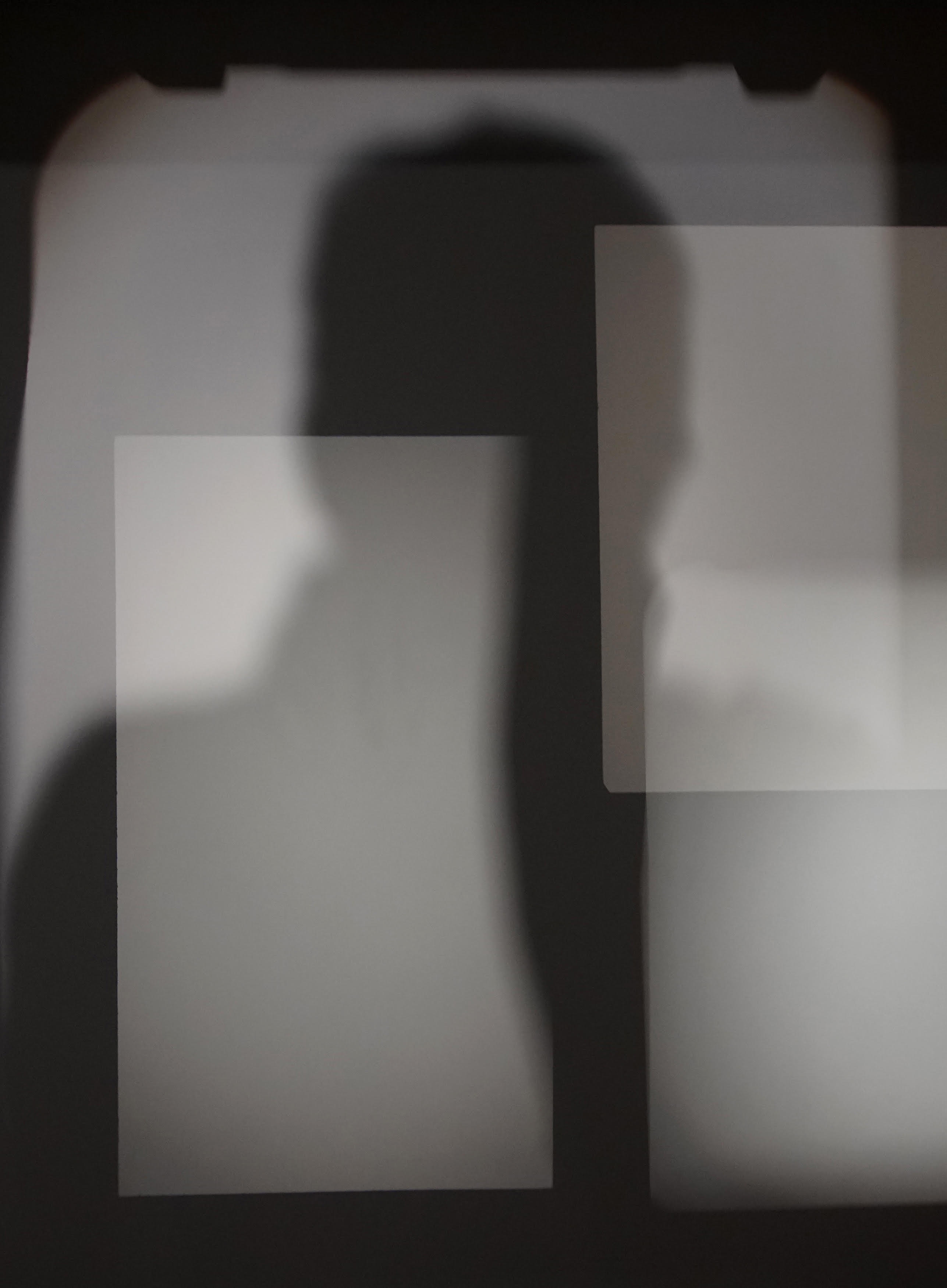 Andrea Geyer is a multi-disciplinary artist un-sensing the construction and politics of time. Her works use performance and video to activate the lingering potential of specific events, places, or biographies as lived in woman identified bodies. She materializes the entanglement of presence and absence of such bodies due to ideologically motivated omissions in archives and memories. Exhibitions include: Museum of Modern Art, the Whitney Museum of American Art, in New York; IMMA in Dublin; TATE Modern in London; Generali Foundation, Secession in Vienna; Witte De White in Rotterdam; Sao Paulo Biennal and documenta12/ Kassel. She is represented by Hales Gallery in London/New York, Galerie Thomas Zander in Cologne. She lives and works in New York. www.andreageyer.info
Andrea Geyer is a multi-disciplinary artist un-sensing the construction and politics of time. Her works use performance and video to activate the lingering potential of specific events, places, or biographies as lived in woman identified bodies. She materializes the entanglement of presence and absence of such bodies due to ideologically motivated omissions in archives and memories. Exhibitions include: Museum of Modern Art, the Whitney Museum of American Art, in New York; IMMA in Dublin; TATE Modern in London; Generali Foundation, Secession in Vienna; Witte De White in Rotterdam; Sao Paulo Biennal and documenta12/ Kassel. She is represented by Hales Gallery in London/New York, Galerie Thomas Zander in Cologne. She lives and works in New York. www.andreageyer.info

Contact Jennifer McGough
Email jenmcgough@g.ucla.edu
Phone
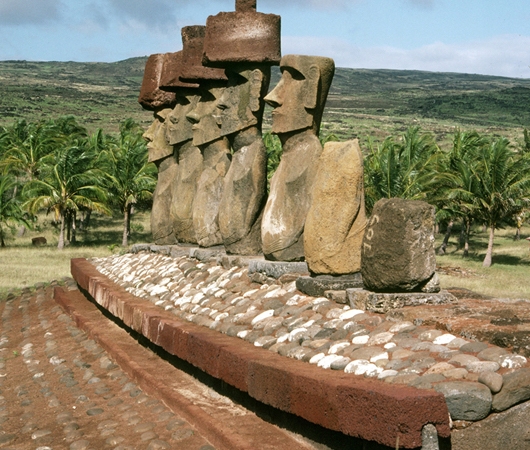
Jo Anne Van Tilburg
Director, Easter Island Statue Project
Rock Art Archive, UCLA Cotsen Institute
An international, multidisciplinary team directed by Jo Anne Van Tilburg conducted a major archeological survey of monolithic sculpture on Rapa Nui (Easter Island). Beginning in 2002, the team mapped the inner basin of Rano Raraku, the island's famed statue quarry. This was followed in 2010 by excavations of four statues in the inner basin. This presentation summarizes highlights of the excavations and their resulting insights into the past. It examines the role of sanctity as expressed in ritualized stone and describes the interactive forces key to the actualization of community expressed as megalithic public art.
Dr. Jo Anne Van Tilburg is an archaeologist and the Director of the Easter Island Statue Project, an archaeological inventory and database project that has produced a stylistic analysis of nearly 900 monolithic statues (moai). Her research interest addresses the integration of symbolism and structure and the complex ways in which humans employ cultural resources, social practices, and ancient aesthetics to relate to and alter, shape, and impact the natural landscape. Social processes and the interactive roles of art, history, and ecology are explored in on-going field and museum studies. Her most recent field project is the digital mapping of the interior of Rano Raraku Statue Quarry, Easter Island. Van Tilburg is an appointed member of the National Landmarks Committee, US National Park Service Advisory Board; a Research Associate of the Cotsen Institute of Archaeology at UCLA, where she directs the UCLA Rock Art Archive; recipient of the 2001 California Governor’s Award for Historic Preservation, and a Fellow of the Royal Geographical Society.
Contact Michelle Jacobson
Email mjacobson@ioa.ucla.edu
Phone
Stephen Koob
Chief Conservator Emeritus of The Corning Museum of Glass
Friday March 12th, 11:00am - 12:00pm (PT)
Archaeological glass encompasses glass that has been buried, either in the ground or in fresh or salt water. In some cases glass was intentionally buried as grave gifts and can be found in archaeological cemeteries or tombs. Most glasses in museum and private collections do not have provenances and their place of manufacture or origin is unknown, or only known by comparison with actual excavated sources. Archaeological glasses can be preserved in many various states. In some cases the glass has not changed at all, or very little since manufacture, in other cases the glass may be heavily deteriorated and extremely fragile. Archaeologists, excavation personnel, volunteers and conservators who will be responsible for handling glass should be familiar with the proper procedures, materials and techniques that are used in the lifting, handling, packing, transportation and storage of glass vessels and fragments. Severely deteriorated or “weathered” layers on archaeological glasses are extremely sensitive to touch, and should be handled as little as possible.In general, excavated archaeological glasses should be kept dry if found dry; wet, if found wet (underwater retrieval); or damp, if found damp; until careful examination is possible and time is available for treatment.Safe retrieval is a priority.Treatment can involve simple cleaning, or not; consolidation of fragile or lifting surfaces, and possible reassembly using the adhesive Paraloid B-72. The eventual disposition of an object, or group of objects, should be considered before any intervention is carried outwhether the object is to be housed in storage, studied, published, or placed on display. Assembled objects also often require a significantly larger storage space (shelving or cabinets) than individual fragments, which can be bagged or placed in drawers. Restoration beyond this is rarely done in the field, but may be done in a museum.
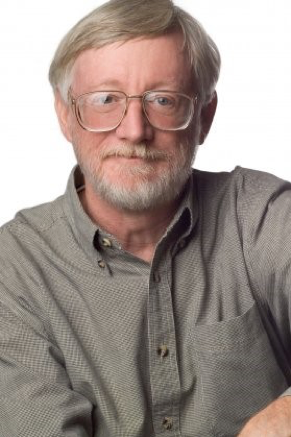 Stephen Koob is Chief Conservator Emeritus of The Corning Museum of Glass, having recently retired from the Museum.
Stephen Koob is Chief Conservator Emeritus of The Corning Museum of Glass, having recently retired from the Museum.
Koob holds an MA in Classical Archaeology from Indiana University, and a B.Sc. in Archaeological Conservation and Materials Science from the Institute of Archaeology, University of London. Before joining the Corning Museum staff in 1998, Koob worked for 11 years as conservator, specializing in ceramics and glass, at the Freer Gallery of Art and Arthur M. Sackler Gallery, Smithsonian Institution.
A member of numerous professional organizations, including the Archaeological Institute of America, Koob is also a Fellow of the International Institute of Conservation and the American Institute for Conservation. He recently replaced Dr. Robert Brill as Chairman of Technical Committee 17, which studies the Archaeometry and Conservation of Glass, as part of the International Commission on Glass. He is the author of the book, Conservation and Care of Glass Objects (2006). He is an expert in dealing with “crizzling,” a condition that affects unstable glass.
In 2014 Koob received the Sheldon and Caroline Keck Award from the American Institute for Conservation of Historic and Artistic Works (AIC). The award is given to an individual who has “a sustained record of excellence in the education and training of conservation professionals.” For decades he has devoted time to training conservation interns at The Corning Museum of Glass, and he has taught conservation courses around the world. [https://blog.cmog.org/2014/07/30/conservator-stephen-koob-wins-award-for-dedication-to-training-and-mentoring/]. He has worked, taught and supervised on numerous archaeological sites, including the Agora in Athens, Gordion, Turkey, and Samothrace, Greece.
Contact Jennifer McGough
Email jenmcgough@g.ucla.edu
Phone
Katherine Ridgway, Dr. Dell Upton, Burt Pinnock
Friday February 26th, 11:00am - 12:30pm (PT)
Conservation and Confederate Monuments preserve and protect what and how
The question of how Americans should address public monuments to the Confederacy, problematic symbols of white supremacy, received significant re-examination in the summer of 2020, sparking fresh discourse on how these monuments contribute to our understanding of history, cultural values, and identity and what actions can and should be taken in response.
This panel will explore how professionals in the fields of architecture, conservation, and history are currently addressing these topics and their visions for the fate of these works.
 Katherine Ridgway
Katherine Ridgway
Katherine Ridgway has been the State Archaeological Conservator for the Virginia Department of Historic Resources (DHR) for eight years. In this position, she has recently provided advice on the conservation and preservation considerations involved when communities and agencies in the Commonwealth are working with Confederate and other contested monuments. She helped to write the DHR Guidance Regarding Confederate Monuments document and participated in the AIC Contested Monument Working Group.
Katherine is a William and Mary graduate and received her Master’s degree from Durham University in Northern England in the Conservation of Historic Objects. She has over 20 years of conservation experience, including working as an Assistant Conservator at the Field Museum in Chicago and as the Fine and Decorative Arts Conservator for George Washington’s Mount Vernon. She is also a Fellow in the AIC and the President of the Virginia Conservation Association.
 Dr. Dell Upton
Dr. Dell Upton
Architectural historian Dell Upton is Distinguished Research Professor in the Art History Department at UCLA where he taught for twelve years before retiring in 2020. He previously taught at Berkeley and the University of Virginia. Upton is the author of What Can and Can’t Be Said: Race, Uplift and Monument Building in the Contemporary South (Yale, 2015), as well as numerous articles about contemporary monument debates in the United States and Italy. Among his other books are American Architecture: A Thematic History (Oxford, 2019) and Another City: Urban Life and Urban Spaces in the New American Republic (Yale, 2008). During the current academic year, he is serving as Kress-Beinecke Professor at the Center for Advanced Studying the Visual Arts at the National Gallery of Art, Washington, D.C.
 Burt Pinnock, FAIA is a principal and chairman of the board at Baskervill, a 123-year-old design firm. For Burt, architecture and design isn’t a job; it’s his personal contribution to the wellbeing and vitality of our communities. Over his 30-year career Burt’s commitment and passion has created impactful work for neighborhoods, cultural institutions and forward-thinking companies, including the Black History Museum and Cultural Center of Virginia, Civil Rights Memorial Plaza at the Virginia Capitol, Colbrook Affordable Housing masterplan and more. A founder and board member of the nonprofit Storefront for Community Design, Burt currently serves as Chairman of the Commonwealth of Virginia’s Art and Architectural Review Board and is a board member of the Legal Aid Justice Center, amongst numerous other board and committee engagements. Burt is a graduate of Virginia Tech and calls Richmond, Virginia home.
Burt Pinnock, FAIA is a principal and chairman of the board at Baskervill, a 123-year-old design firm. For Burt, architecture and design isn’t a job; it’s his personal contribution to the wellbeing and vitality of our communities. Over his 30-year career Burt’s commitment and passion has created impactful work for neighborhoods, cultural institutions and forward-thinking companies, including the Black History Museum and Cultural Center of Virginia, Civil Rights Memorial Plaza at the Virginia Capitol, Colbrook Affordable Housing masterplan and more. A founder and board member of the nonprofit Storefront for Community Design, Burt currently serves as Chairman of the Commonwealth of Virginia’s Art and Architectural Review Board and is a board member of the Legal Aid Justice Center, amongst numerous other board and committee engagements. Burt is a graduate of Virginia Tech and calls Richmond, Virginia home.
Contact Jennifer McGough
Email jenmcgough@g.ucla.edu
Phone
Presented by
Dr. Stephen Acabado
Associate Professor, Department of Anthropology, UCLA
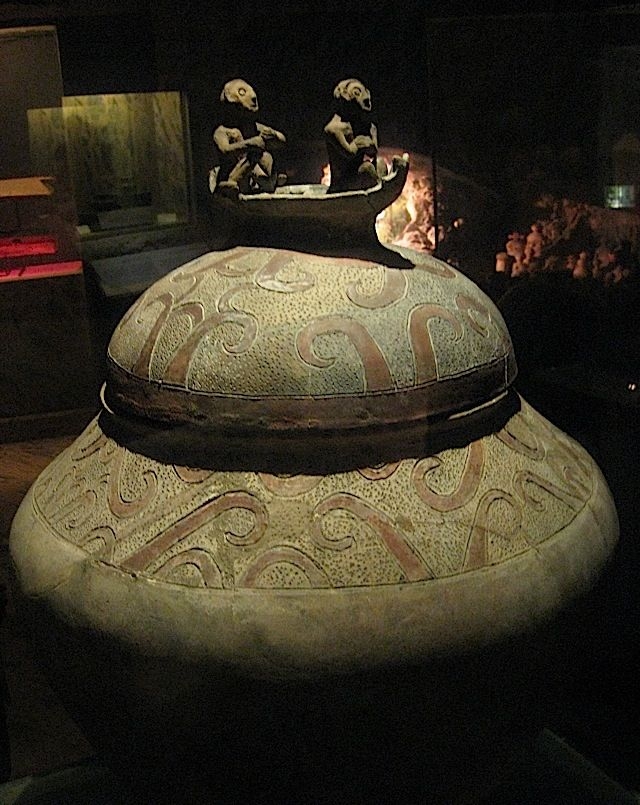 Current research in Philippine archaeology is pushing back against the colonial foundations of the discipline and the hegemonic status of the Three Age System in the region, including the broader Southeast Asian archaeology. The Three-Age Model, developed for Scandinavia, was imposed on Southeast Asia through its application in Northeast Thailand archaeological record, particularly the reference to the Bronze Age and the farmer-led migration in island Southeast Asia and the Pacific. Recent archaeological data now refute these models. In the Philippines, the long-accepted Neolithic migration by rice farmers, is repudiated the absence of wet-rice in the archaeological record that predates the 16th century. Following the lead of recent scholars, Acabado stresses that Philippine archaeology, in particular, and Southeast Asian archaeology, in general, must reject these essentialist frameworks in favor of forward-facing “emergent” paradigms. Doing so allows Southeast Asian archaeologists to decolonize chronology building and devote less time to worrying about origins to focus instead on understanding process and to incorporating Indigenous perspectives in archaeological interpretation.
Current research in Philippine archaeology is pushing back against the colonial foundations of the discipline and the hegemonic status of the Three Age System in the region, including the broader Southeast Asian archaeology. The Three-Age Model, developed for Scandinavia, was imposed on Southeast Asia through its application in Northeast Thailand archaeological record, particularly the reference to the Bronze Age and the farmer-led migration in island Southeast Asia and the Pacific. Recent archaeological data now refute these models. In the Philippines, the long-accepted Neolithic migration by rice farmers, is repudiated the absence of wet-rice in the archaeological record that predates the 16th century. Following the lead of recent scholars, Acabado stresses that Philippine archaeology, in particular, and Southeast Asian archaeology, in general, must reject these essentialist frameworks in favor of forward-facing “emergent” paradigms. Doing so allows Southeast Asian archaeologists to decolonize chronology building and devote less time to worrying about origins to focus instead on understanding process and to incorporating Indigenous perspectives in archaeological interpretation.
Register in advance for this meeting:
https://ucla.zoom.us/meeting/register/tJMlf-2qpzIuGt02NbLgx-ULeGHi1lDJWNmC
After registering, you will receive a confirmation email containing information about joining the meeting.
Stephen Acabado is associate professor of anthropology at UCLA. His research revolves around indigenous responses to colonialism, particularly in the Philippines. He is a strong advocate of an engaged archaeology where descendant communities are involved in the research process.
Grace Barretto-Tesoro is professor of archaeology at the University of the Philippines Diliman. Her archaeological work is focused on changing representation of various segments of society from the late precolonial period to the early Spanish period Philippines.
Contact Michelle Jacobson
Email mjacobson@ioa.ucla.edu
Phone
Lylliam Posadas
Friday January 29th, 11:00am - 12:00pm (PT)
Conservators can play a significant role in the repatriation process and in addressing concerns in the care of sensitive collections. Conservators and repatriation staff can work together with tribal and community representatives to address some of the unjust histories of museum acquisitions and develop new approaches for collections stewardship. Professional ethics in the conservation field,as well as technical knowledge and skill sets, can be a source of support for repatriationand ethical stewardship. Diversity, equity and inclusion (DEAI) policies and programs are critical in building systems that encourage considerate and conscientious professional practices that can support tribal and community ownership and control of collections.This program will discuss how conservators, both students and professionals, can support the repatriation of Indigenous belongings under the Native American Graves Protection and Repatriation Act (NAGPRA). It will also explore how conservators can address concerns beyond NAGPRA that are relevant to the repatriation process and experience and to the training of future generations of conservators.
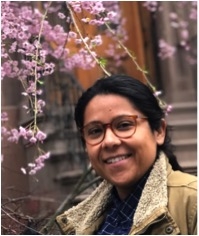 Lylliam Posadas has experience with repatriation and collaborative and community-driven research within museums, universities, and community organizations. She is interested in how institutional policies support the development and sustainability of collaborative research and collections care practices. Lylliam focuses on systemic institutional change in support of repatriation, collections care and access, representation and diversity initiatives, and the use of non-destructive and non-invasive methods of investigating community-driven research questions. She received an MSc in the Technology and Analysis of Archaeological Materials from University College London and a double BA in Anthropology and Psychology from the University of California, Los Angeles. Lylliam has participated in field research, including preservation efforts in Ghana, Peru, Louisiana, and California and also serves on several boards and committees, including the Mellon Opportunity for Diversity in Conservation. Lylliam is also involved in community-driven research, policy development, and advocacy in public health which informs her approach to heritage work
Lylliam Posadas has experience with repatriation and collaborative and community-driven research within museums, universities, and community organizations. She is interested in how institutional policies support the development and sustainability of collaborative research and collections care practices. Lylliam focuses on systemic institutional change in support of repatriation, collections care and access, representation and diversity initiatives, and the use of non-destructive and non-invasive methods of investigating community-driven research questions. She received an MSc in the Technology and Analysis of Archaeological Materials from University College London and a double BA in Anthropology and Psychology from the University of California, Los Angeles. Lylliam has participated in field research, including preservation efforts in Ghana, Peru, Louisiana, and California and also serves on several boards and committees, including the Mellon Opportunity for Diversity in Conservation. Lylliam is also involved in community-driven research, policy development, and advocacy in public health which informs her approach to heritage work
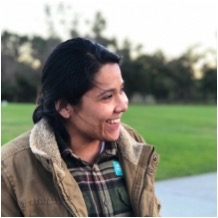
Contact Jennifer McGough
Email jenmcgough@g.ucla.edu
Phone
Dr. Piphal Heng, ACLS Postdoctoral Fellow, Northern Illinois University
Tuesday, January 19, 2021 10:00 AM (Pacific Time) Zoom Webinar
“Compassion” was an instrumental state’s infrastructure in building, maintaining, and expanding Angkor’s power from the 9th through 15th centuries CE. Angkorian civilization is known for its intricately carved monumental architecture, large water reservoirs, and interconnected road and canal systems. The relative importance of religion in Angkorian state governance has been debated for more than a century: to what extent can we separate Angkorian “church” from Angkorian state? This lecture provides a background to Angkor and emphasizes two rulers. The first was Yaśovarman I (889-910 CE), who established religious foundations throughout his polity to support his population and nurture religious pluralism. Attention concentrates on Jayavarman VII (1181-1218 CE), whose embrace of Buddhism and state projects were undergirded by a commitment to compassion. His many religious foundations (temples with reservoirs, etc.) housed religious specialists, hosted universities, and served as community anchors. They also expressed state power, marked its territories, and provided myriad social services to Angkorian Khmers.
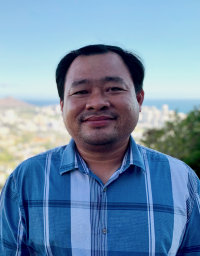
Dr. Piphal Heng is a postdoctoral fellow at the Center for Southeast Asian Studies at Northern Illinois University. He received his PhD degree in Anthropology from the University of Hawai‘i at Mānoa. Heng’s archaeological research themes include religious change, urbanism, settlement patterns, political economy, and sociopolitical organizational shift. He is also interested in the intersection between heritage management, collaborative/public archaeology, knowledge production, and urban development. His current project explores the transformation of urban and rural settlements in response to the demographic and political changes that took place with the adoption of Theravada Buddhism in Angkor (14th-18th century Cambodia).
Registration for Zoom Link:
Sponsored by the UCLA Center for Southeast Asian Studies
Contact UCLA Center for Southeast Asian Studies
Email cseas@international.ucla.edu
Phone
Brittany Cox
Horological Conservator, Memoria Technica
Friday December 18th, 11:00am - 12:00pm (PT)
In conservation there is always the question of tangible versus intangible qualities. Is one more important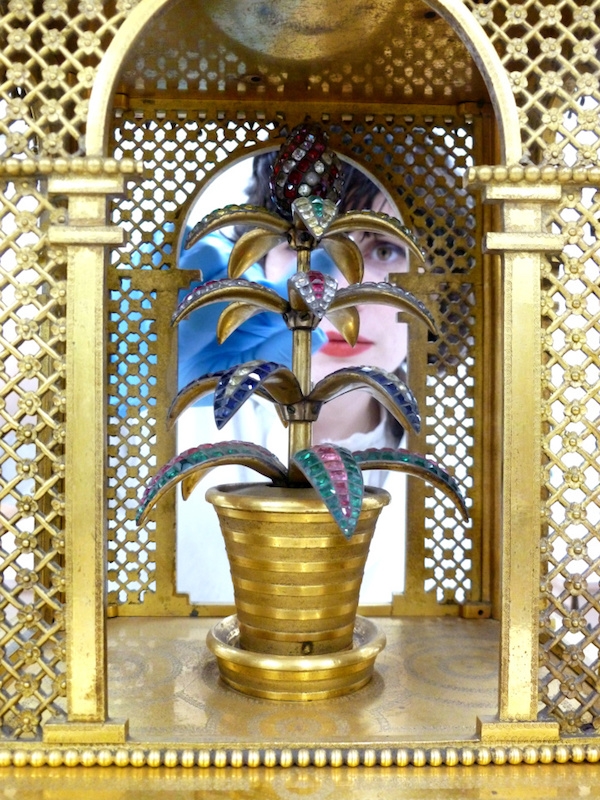 than the other? Should form follow function, or function follow form? If a functional object is beautifully presented and preserved, but doesn’t actually work, is it successful? The conservation of dynamic objects, especially in the case of automata and mechanical magic, confront these questions head-on. We will examine these questions by looking at a number of objects and their treatments.
than the other? Should form follow function, or function follow form? If a functional object is beautifully presented and preserved, but doesn’t actually work, is it successful? The conservation of dynamic objects, especially in the case of automata and mechanical magic, confront these questions head-on. We will examine these questions by looking at a number of objects and their treatments.
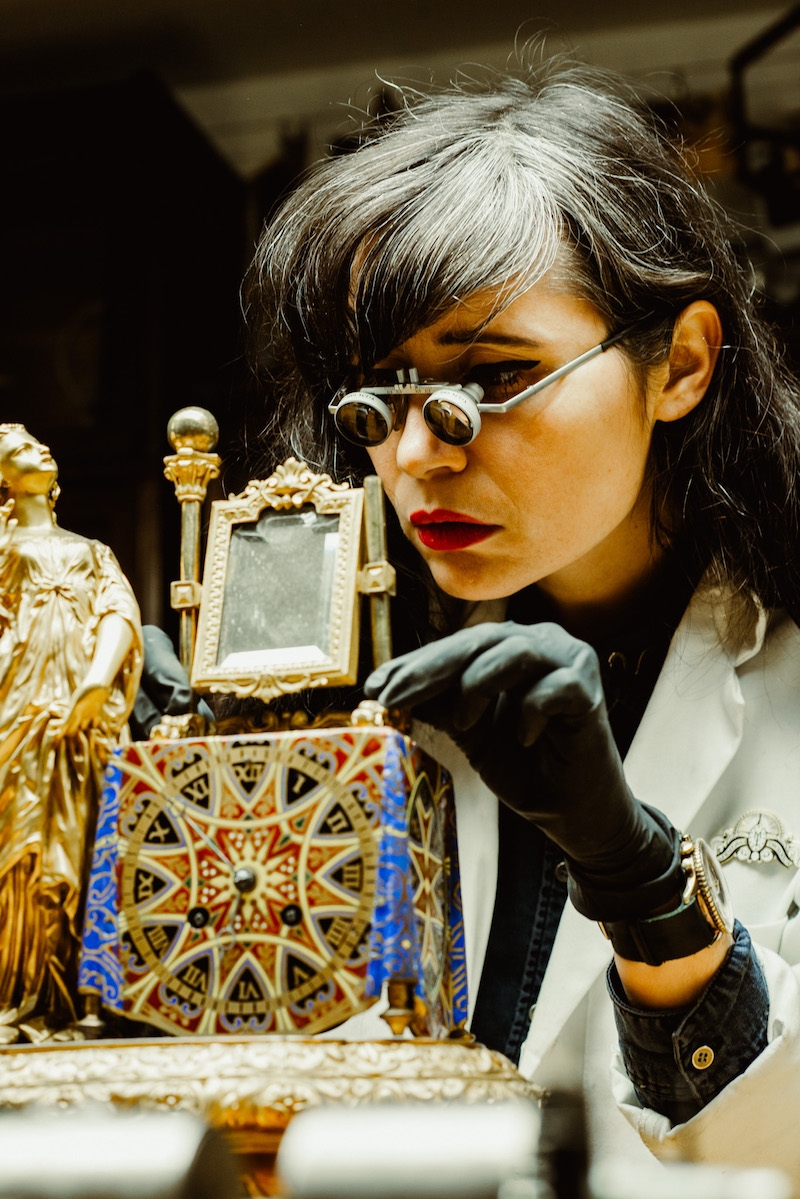 Brittany Nicole Cox founded her private conservation practice and studio Memoria Technica in 2015. Her lifelong passion for horology has seen her through nine years in higher education where she earned her WOSTEP, CW21, and SAWTA watchmaking certifications, two clockmaking certifications, and a Masters in the Conservation of Clocks and Related Dynamic Objects from West Dean College, UK. Her original work has been exhibited at the Museum of Arts and Design in New York and she is currently working on a series of bestiary automata inspired by illuminated texts and a manuscript to be published by Penguin Press.
Brittany Nicole Cox founded her private conservation practice and studio Memoria Technica in 2015. Her lifelong passion for horology has seen her through nine years in higher education where she earned her WOSTEP, CW21, and SAWTA watchmaking certifications, two clockmaking certifications, and a Masters in the Conservation of Clocks and Related Dynamic Objects from West Dean College, UK. Her original work has been exhibited at the Museum of Arts and Design in New York and she is currently working on a series of bestiary automata inspired by illuminated texts and a manuscript to be published by Penguin Press.
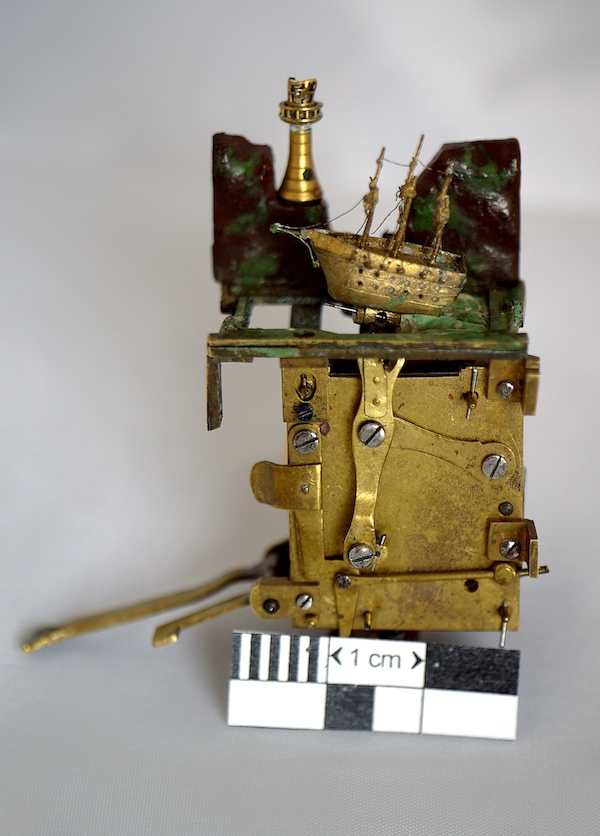

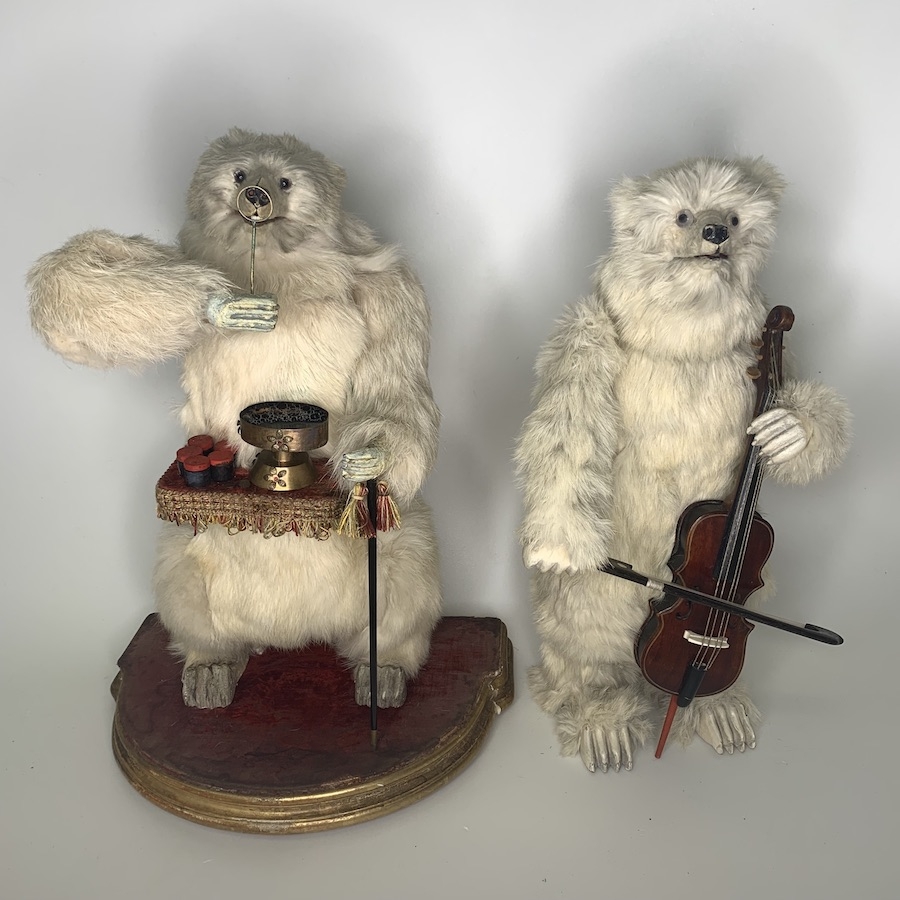
Contact Jennifer McGough
Email jenmcgough@g.ucla.edu
Phone
- ‹ previous
- 3 of 7
- next ›
